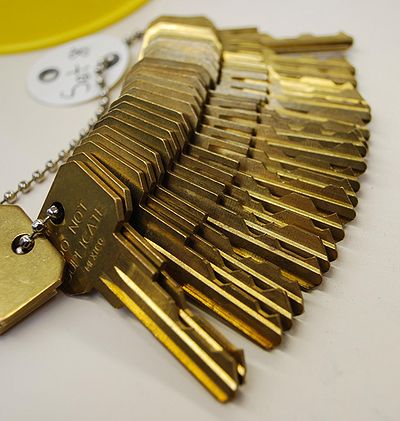Tryout keys: Difference between revisions
From Lockwiki
Jump to navigationJump to search
No edit summary |
(Pictures and wikitext cleanup :)) |
||
| Line 1: | Line 1: | ||
=Tryout | =Tryout keys= | ||
[[File:Tryout_keys_kwikset_smart_key.jpg|thumb|right|text-top|A portion of the tryout key set used with the [[Kwikset SmartKey]] lock.]] | [[File:Tryout_keys_kwikset_smart_key.jpg|thumb|400px|right|text-top|A portion of the tryout key set used with the [[Kwikset SmartKey]] lock.]] | ||
'''Tryout keys''' are a [[ | '''Tryout keys''' are a [[lockpicking]] tool used to exploit poor tolerances in locks. A collection of keys with custom depth and spacing patterns is produced to manipulate internal components to various positions. In some cases they are capable of rapidly brute-forcing all keying depths for the lock. Because tryout keys are used as normal [[key]]s they are generally considered a form of [[surreptitious entry]]. | ||
This technique is made possible by a low number of real key [[ | This technique is made possible by a low number of real key [[differs]] as a result of poor manufacturing tolerances or key specifications. | ||
<br clear=all> | |||
==See also== | ==See also== | ||
* [[Differs]] | * [[Differs]] | ||
Latest revision as of 22:21, 22 February 2011
Tryout keys

A portion of the tryout key set used with the Kwikset SmartKey lock.
Tryout keys are a lockpicking tool used to exploit poor tolerances in locks. A collection of keys with custom depth and spacing patterns is produced to manipulate internal components to various positions. In some cases they are capable of rapidly brute-forcing all keying depths for the lock. Because tryout keys are used as normal keys they are generally considered a form of surreptitious entry.
This technique is made possible by a low number of real key differs as a result of poor manufacturing tolerances or key specifications.
See also
| This article is a stub. You can help Lockwiki by expanding it. |
